► All-new Clio Mk5
► Choice of petrol hybrid
► Impressive interior and tech
The Clio formula – that of an attractive yet practical hatchback – has been immensely successful for over 30 years now, with Renault’s city car regularly topping best-seller charts across Europe. For this latest generation, the temptation for Renault to adjust the Clio recipe has surely never been greater, not least given the pace of technological change and insatiable consumer demand for crossover styling. Yet the Mk5 is, cleverly, both entirely familiar and a thorough overhaul.
The styling is a true nip/tuck affair, taking the already quite pretty Mk4 (with us from 2012 to 2019) and making it more cohesive if slightly more anonymous. Changes to the platform, engines and transmissions – not to mention a radically rebuilt interior with much-improved tech – but the Clio still fills the same brief – it’s the same, but better.
Renault has resisted the temptation to let the Clio’s proportions drift into modish crossover territory – the new Captur scratches that itch. And, although there’s now a hybrid and some clever tech, the new Clio line-up is at heart a substantial and very well executed evolution of Europe’s most popular supermini. They’ve sold 15 million worldwide since 1980; that’s one per minute, and not the sort of success you want to jeopardise.
What’s the range?
In the UK at launch there were three petrol engines (74bhp 1.0-litre triple, 99bhp turbo 1.0-litre triple, and a 128bhp turbo 1.3-litre four) and an 84bhp 1.5-litre turbodiesel four.
As of 2021, things have changed somewhat. There are now just two engines, called the TCe 90 and E-Tech 140 Auto, on offer across the three trim levels. The TCe90 is a 1.0-litre, three-cylinder turbo petrol with 89bhp, 118lb ft and a six-speed manual gearbox.
The 128bhp turbo is gone, as is the diesel, and in their place you’ll find the four-cylinder, 1.6-litre E-Tech hybrid. This has 138bhp, up to 151lb ft and a six-speed semi-automatic ‘box – we’ve reviewed it separately to the petrol car.
Renault Clio E-Tech hybrid review
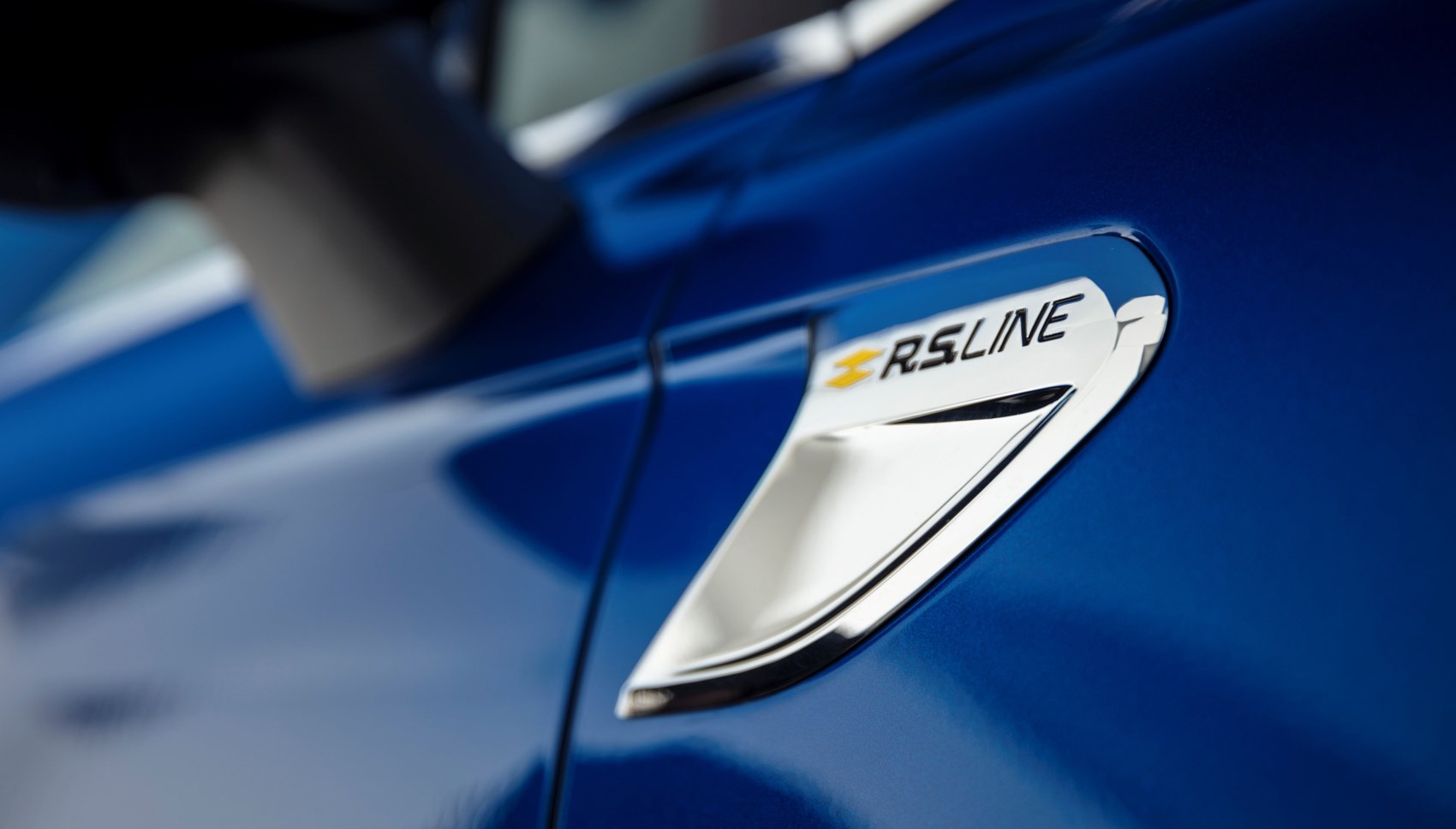
All Clios come with a good level of electronic safety aids and connectivity – Android Auto, Apple CarPlay, lane departure warning, lane keep assist, traffic sign recognition, etc – with a lot more available. It’s no A-Class, but you can have different coloured ambient lighting, and there is limited voice activation (simple addresses, phone numbers, track selection) but no head-up display or augmented-reality nav. All cars come with LED headlights, cruise control, a camera at the top of the windscreen and radar in the grille.
Trim levels run Play, Iconic, S Edition and RS Line, with an E-Tech Launch Edition exclusively available as a hybrid.
Looks very familiar…
But it’s nearly all new. The Mk5 Clio is the first car to have as its underpinnings Renault’s new CMF-B platform. It’s been designed to incorporate the safety systems and connectivity that are expected today, and to be ready for a variety of powertrains, including hybrids, but not including pure electric; the new Zoe has its own platform.
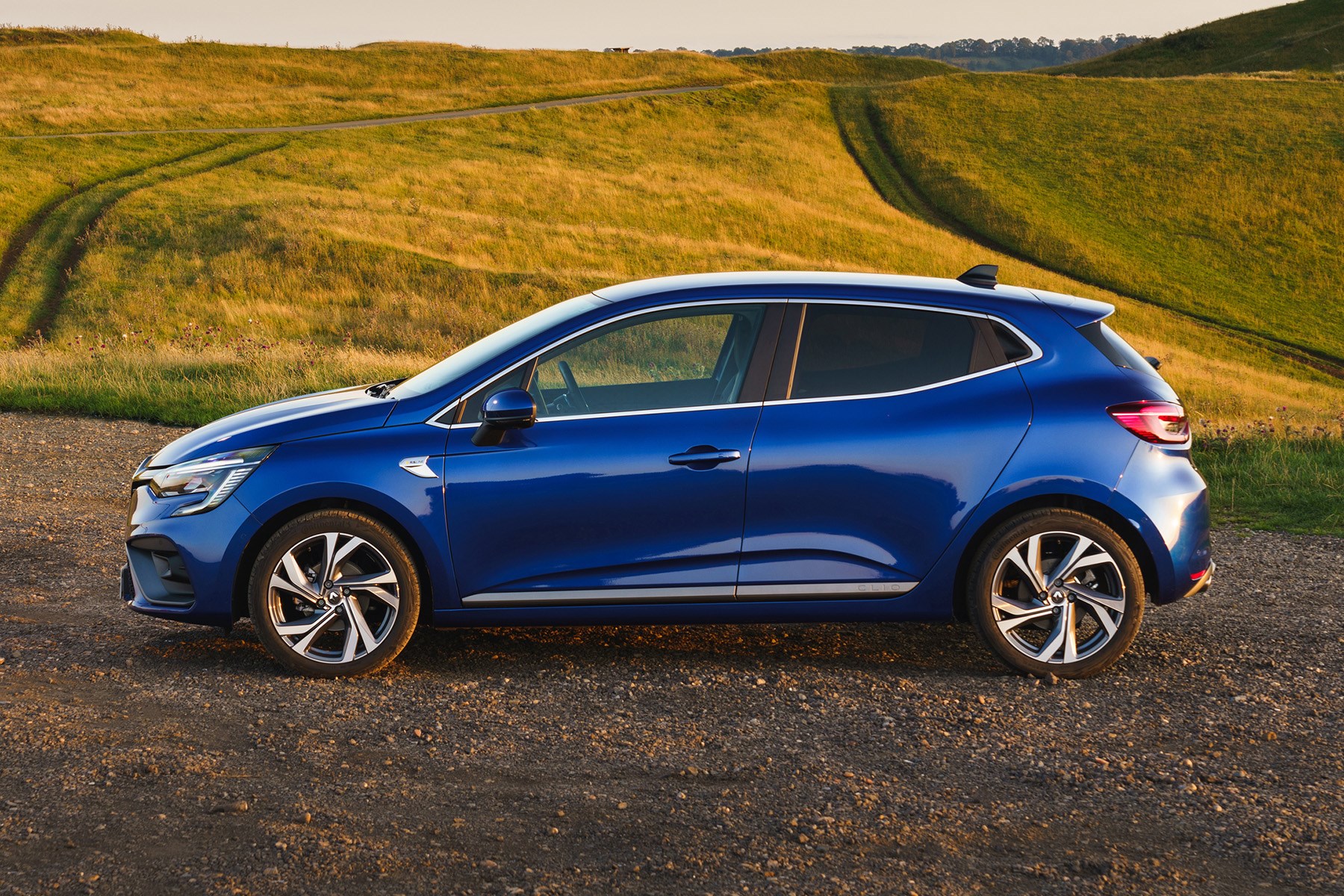
The new Clio has a fractionally shorter wheelbase and is slightly lower, while being roomier in most ways. It’s also about 50kg lighter.
The overall exterior look is very much that of the big-selling Mk4, but with a shapelier bonnet, a 43mm lower roofline, a shorter front overhang and a flatter rear hatch.
The inside line
Where the exterior styling has been only minimally changed, the interior is very different, and much better. The tape measure says it’s bigger in some directions, smaller in others. But the point is that clever design work makes better use of space.
The rear seats are lower, and the front seatbacks slimmer, and the headrests much less chunky, to give better sight lines. Up front, the steering wheel is smaller, and the plastic on the steering column is narrower – by just a few millimetres, but it makes a difference. The only time you notice a lack of room is when you’re buckling in or adjusting the seat – those sat in the rear, however, will find legroom at a premium, especially compared to rivals.
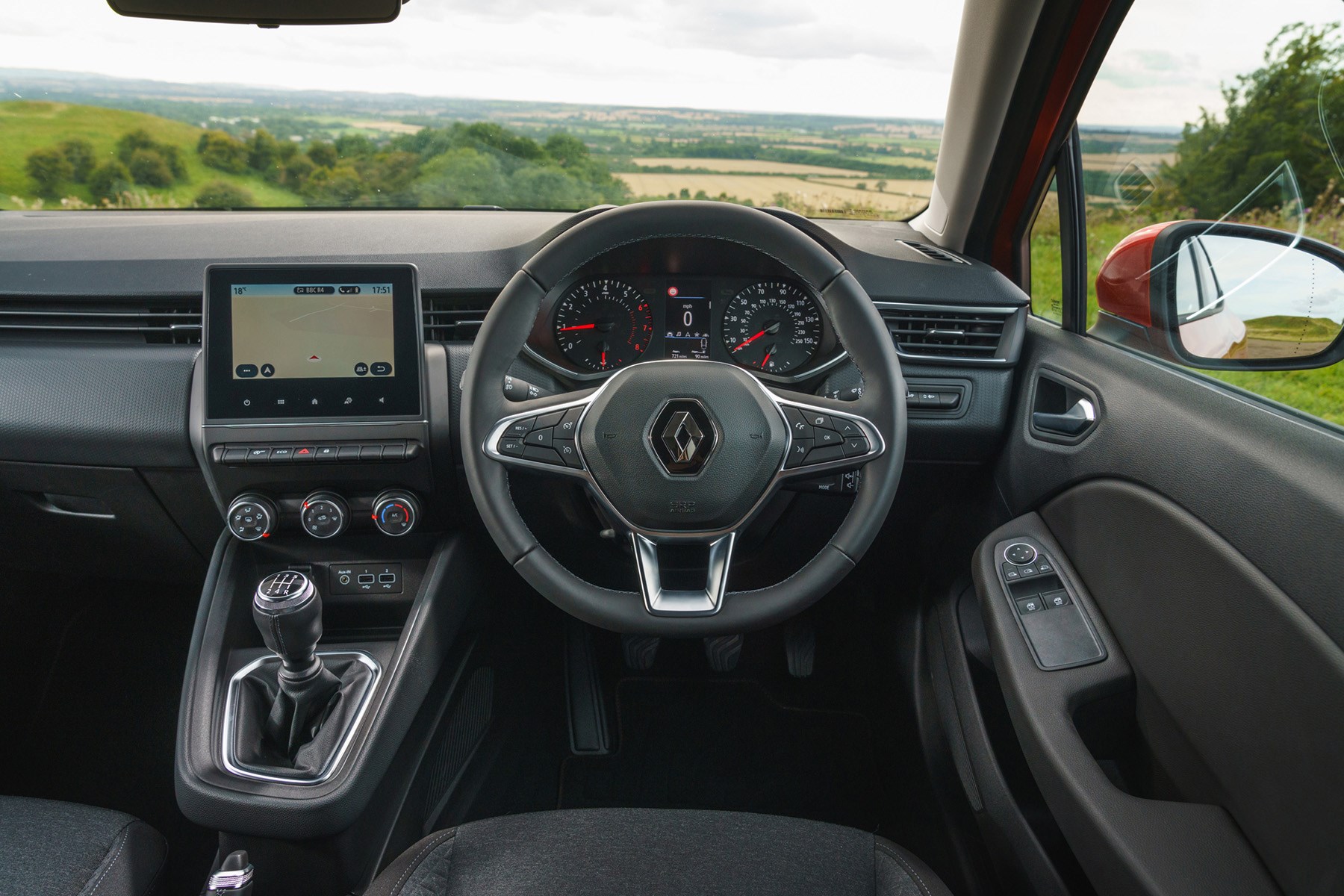
Renault Captur review
The plastics and cloth used are better, and the swoopier, more curved, more horizontal design of the dash adds to the impression of width.
The standout feature up front is the central touchscreen that comes as standard on higher-spec Clios. It’s vertical, a good size at 9.3 inches, customisable and impressively clear. It’s extremely user-friendly; adjusting the volume on Iconic models requires one too many presses, so stick with the controls on the steering column.
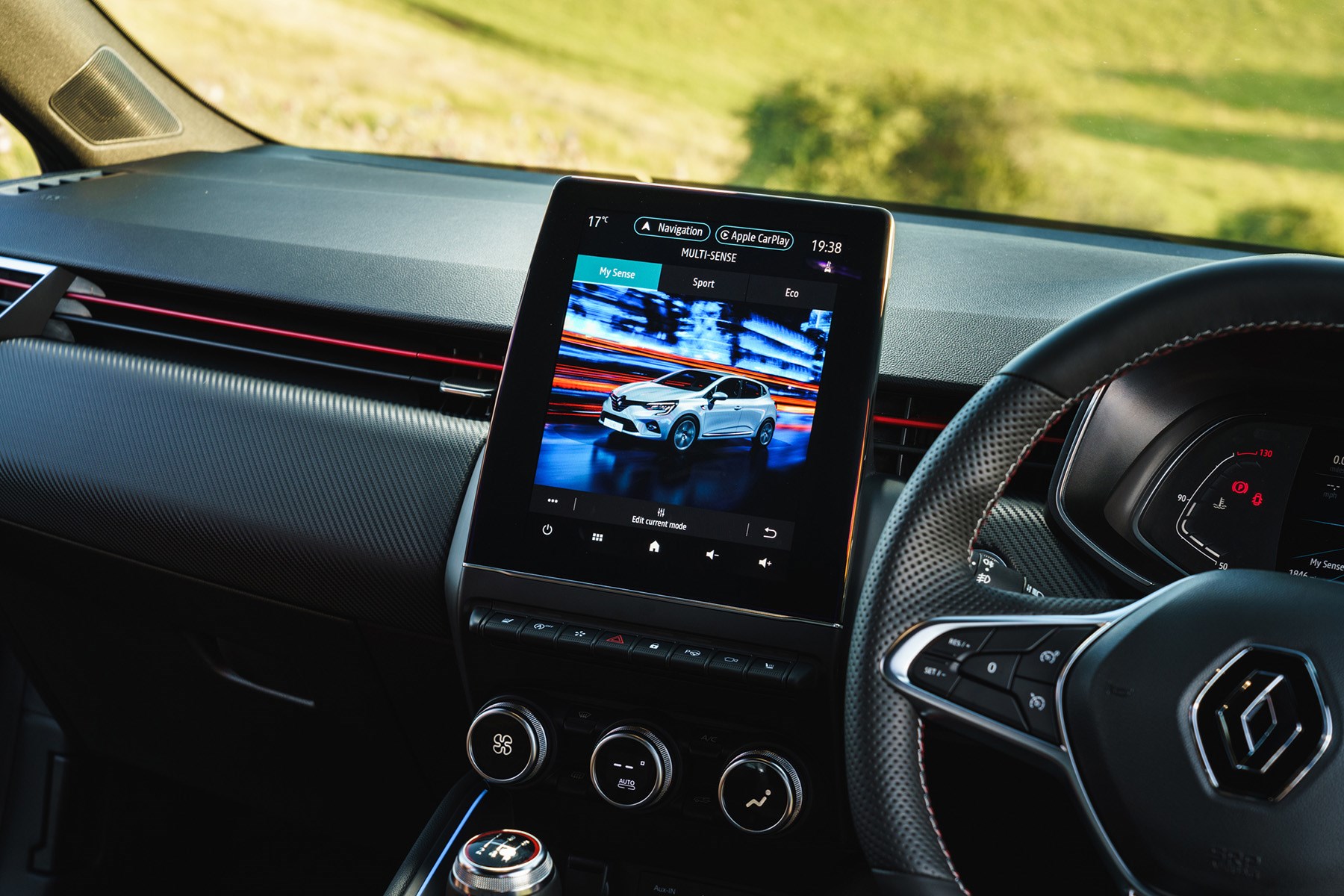
Higher spec S Edition and R.S. Line models also come with a 7.0-inch digital display for the driver, with three customisable areas showing various types of information. You can choose between a power and torque gauge or instant fuel read-out on the top left corner, media information or sat-nav instructions on the top right and driver assistance graphics at the bottom.
The boot has been reshaped. With the rear seats up, the boot is now the biggest in its class, at 391-litres, although it’s smaller than before with the rear seats down. The load lip is higher, which should reduce repair bills in low-speed shunts, but might be a pain in everyday life if you frequently haul heavy items.
On the road
We drove two Clios: a turbo 1.0 triple TCe 100 in mid spec and a 1.3 twin-clutch TCe 130 in the disappointingly low-key RS Line spec. In both, you’re immediately struck by the improved, more natural feel from the revised electric steering, by the composure through bends, by the well-modulated braking, now with less pedal travel, and by the overall improvement in refinement.
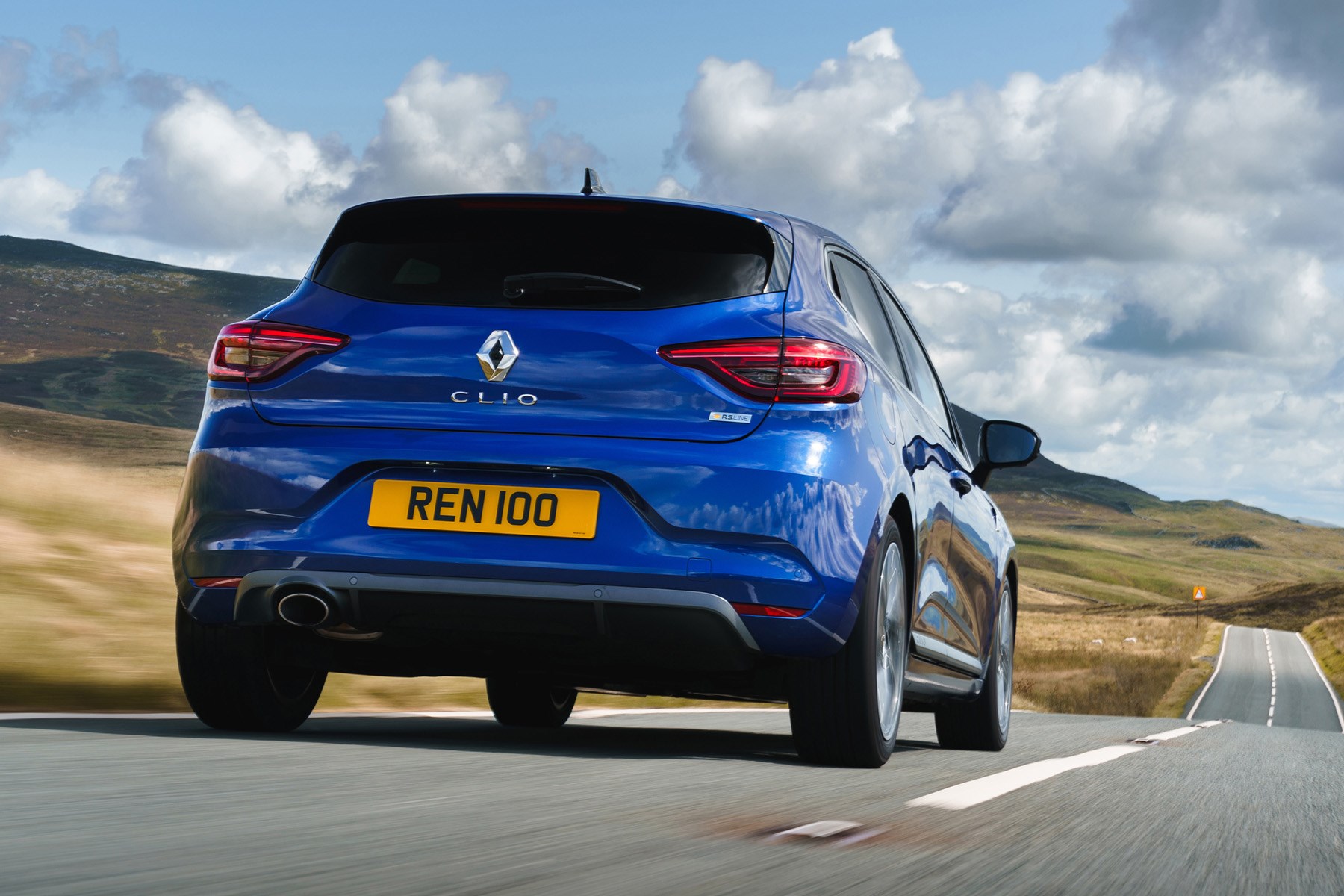
The Clio happily sits in the middle ground of being a comfort-biased car that also manages to be fun at the same time. The suspension soaks up bumps with minimal fuss and it’s only larger bumps and potholes around town that unsettle the car.
There’s a fair degree of body roll, but it deals with it well and offers plenty of grip. The controls are responsive enough to be fun, but it’s a shame the gearlever is so tall that it almost feels like you’re driving around in a Kadjar, or any other crossover or SUV.
R.S. Line models come with Normal, Eco and Sport drive modes to adjust the weighting of the steering and throttle response, but we found these made little difference to the driving experience – stick with the standard setup and you’ve got a well-rounded small hatch.
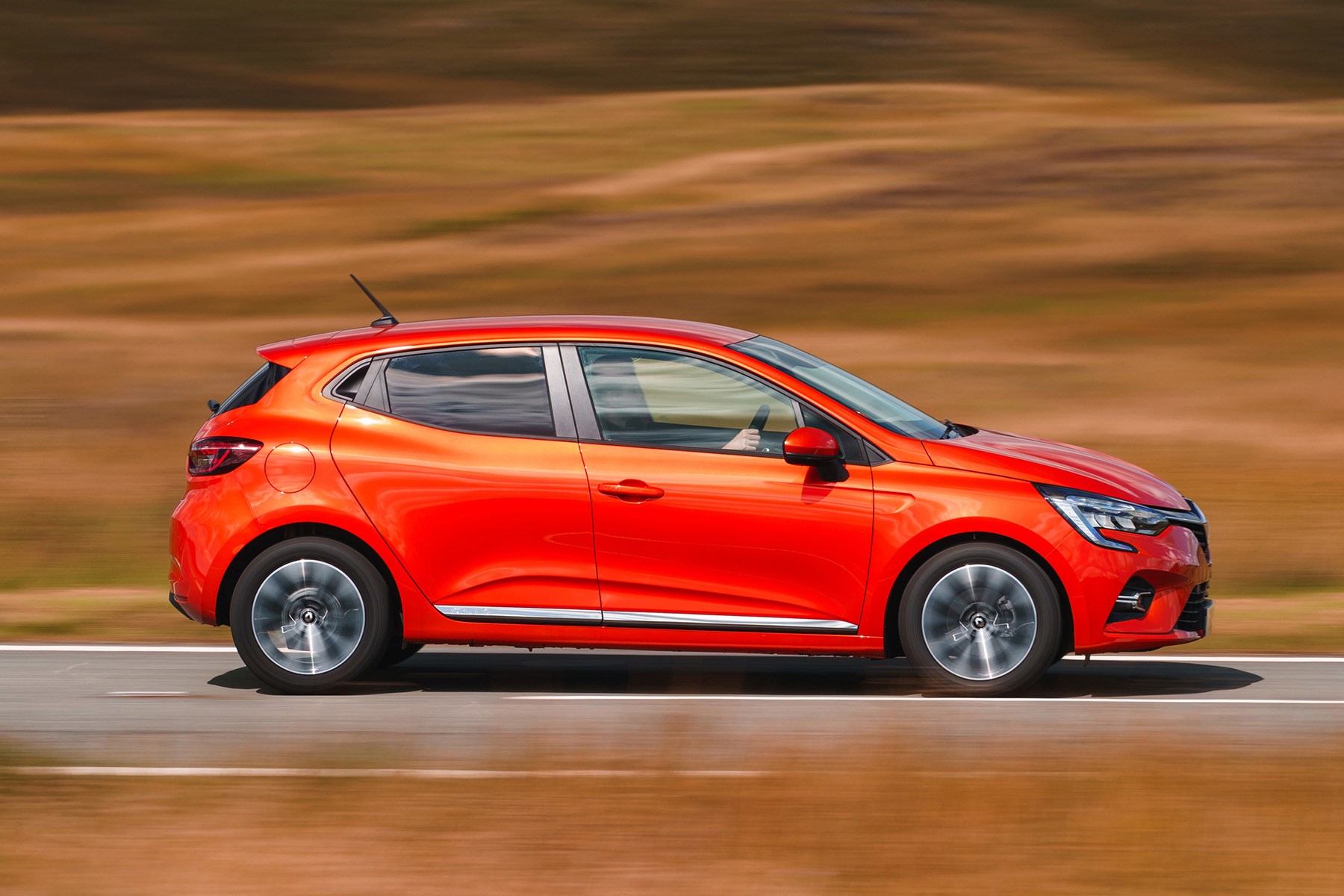
The 1.3 feels considerably more powerful, and smooth with it, flattening out hills, but that’s only once you get going – it’s quite hesitant off the line. The paddleshift for the twin-clutch auto is clean and reasonably quick, but the automatic changes are well programmed if you just leave the car to its own devices.
Available as an option on the 1.3 is Renault’s new Highway & Traffic Jam Companion. It’s excellent in stop-start traffic, and makes life easier on motorways. It will keep you a safe distance from the vehicle in front, restart you from a standstill, keep you centred in a well-marked lane, and will remind you to hold the steering wheel if you get cocky.
Verdict
This is a significantly better package than the previous Clio, which was quite rightly a popular choice. The two engines we’ve tried both suit it well, as do the gearboxes.
The Clio isn’t the most thrilling car to drive, nor is it the most comfortable, but it’s the reshaped cabin and the smartly integrated tech upgrades that make it seem more appealing over the excellent, if rather plain interior of the Fiesta – even if it’s not as refined or as good to drive. The new Peugeot 208 is another compelling contender. There’s never been a better time to choose a small hatch.
Check out our Renault reviews